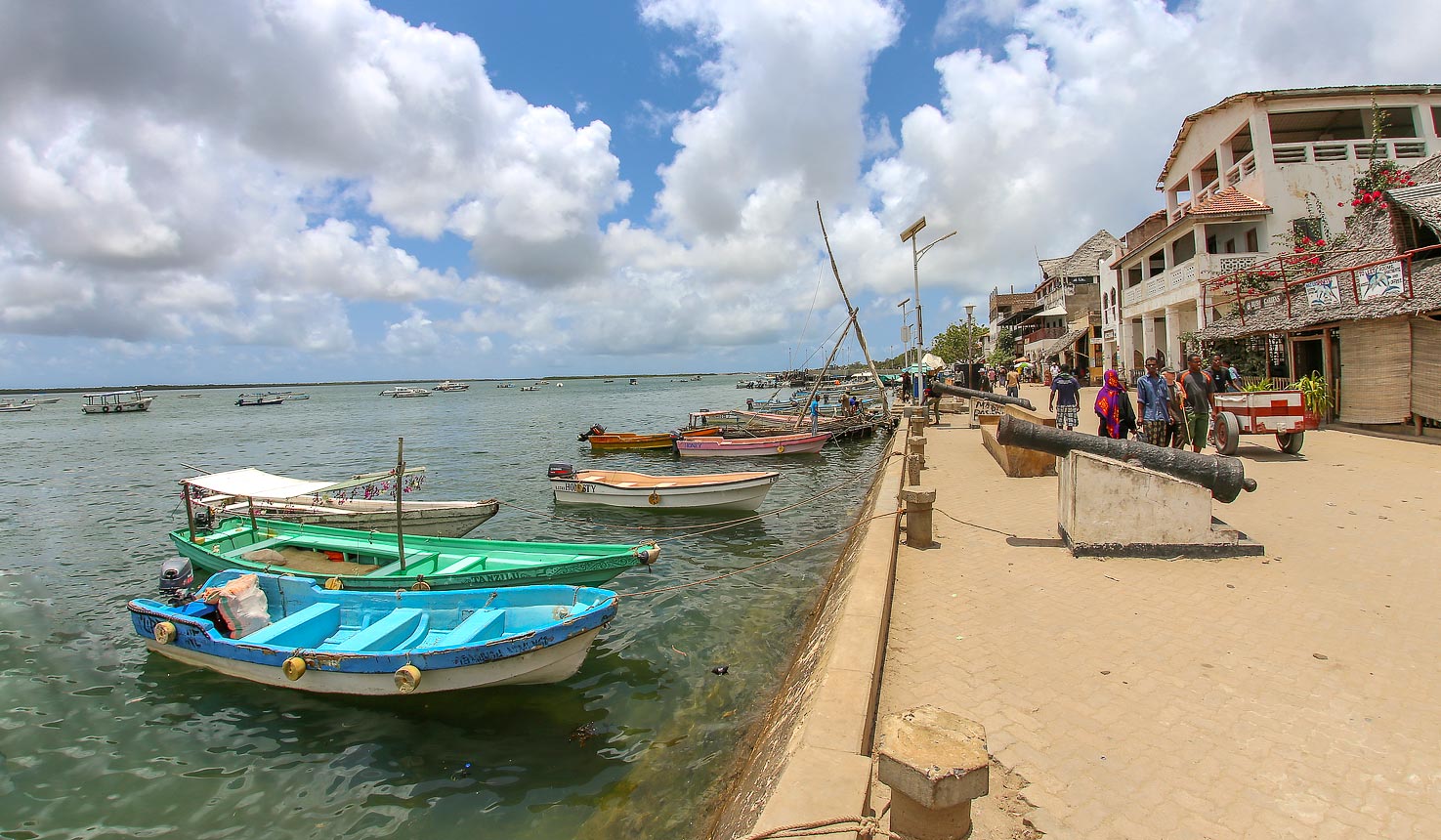Cultural and natural heritage sites are among the priceless and irreplaceable assets for each nation and humanity as a whole.
Kenya is home to 7 UNESCO World Heritage Sites, 3 natural and 4 cultural which carry valuable heritage and fantastic scenery. Because of their exceptional qualities, they can be considered to be of Outstanding Universal Value and as such worthy of special protection against the dangers that increasingly threaten their existence.
World Heritage Sites are cultural or natural sites of ‘Outstanding Universal Value’, which are important across countries and generations and represent unique, or the most significant or best, examples of the world’s cultural or natural heritage and they have been inscribed in the world heritage list by the World Heritage Committee because they have special importance for everyone and represent unique or the most significant or best examples of the world’s cultural and natural heritage.
The 7 UNESCO World Heritage Sites in Kenya
Lake Turkana National Parks

Being the most saline of East Africa’s large lakes, Turkana is an outstanding laboratory for the study of plant and animal families. The three National Parks serve as a stopover for migrant waterfowl and are major breeding grounds for the Nile crocodile, hippopotamus, and a variety of venomous snakes.
The Lake Turkana National Parks were inscribed onto the World Heritage Sites List in 1997 and are now under the joint management of Kenya Wildlife Services (KWS) and NMK.
Lake Turkana National Parks consist of Sibiloi, the South and Central Islands, covering a total area of 161,485 hectares, all located within the Lake Turkana basin whose total surface area is 7 million hectares.
The Lake is the largest desert lake in the world, surrounded by an arid, seemingly extraterrestrial landscape that is often devoid of life.
The long body of Lake Turkana drops down along the Rift Valley from the Ethiopian border, extending 249 kilometres from north to south and 44 km at its widest point, with an average depth of 30 meters.
It is Africa’s fourth-largest lake, fondly called the Jade Sea because of its breathtaking colour.
A Discovery Site at Lake Turkana
At Koobi Fora, extensive paleontological finds have been made, starting in 1969 with the discovery of Paranthropus boisei. The discovery of Homo habilis thereafter is evidence of the existence of a relatively intelligent hominid two million years ago and reflects the change in climate from moist forest grassland to the present hot desert.
The Koobi Fora deposits, rich in mammalian, molluscan, and other fossil remains, have contributed more to the understanding of paleo-environments than any other heritage sites on the continent.
Mount Kenya National Park and Forest: Natural Heritage Sites
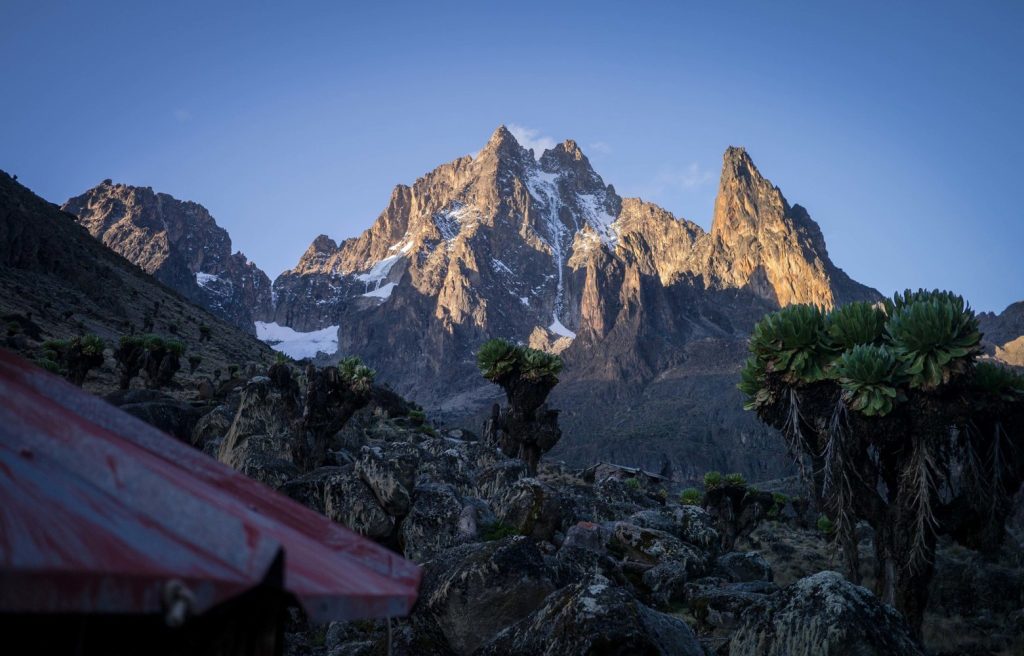
With its rugged glacier-clad summits and forested middle slopes, Mount Kenya is one of the most impressive landscapes in East Africa. The National Park and Forest, founded in 1949, was added to the list of UNESCO World Heritage Sites in 1997 and is under the joint management of KWS and the Museum (NMK).
The aim was to protect Mount Kenya, along with its wildlife and environment. The natural environment is crucial as a natural habitat for the animal species that live in the area. It also acts as a water catchment area that provides water to Kenya and is a UNESCO Biosphere Reserve.
The Second-highest peak in Africa
Mount Kenya straddles the equator about 193 km northeast of Nairobi and about 480 km from the Kenyan coast. At 5,199 m, Mount Kenya is the second-highest mountain in Africa and is an ancient extinct volcano.
The Evolution and Ecology
The evolution and ecology of its afro-alpine flora provide an outstanding example of ecological and biological processes. The area also lies within the traditional migrating route of the African elephant population.
Lamu Old Town: Cultural Heritage Sites
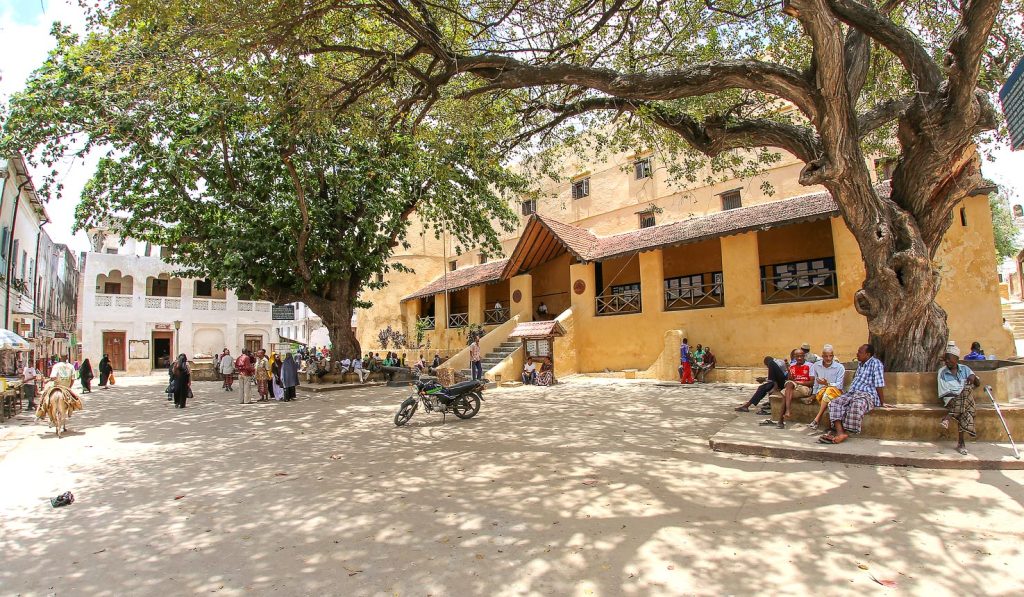
Lamu Old Town is the oldest and best-preserved Swahili settlement in East Africa, retaining its traditional functions. Built-in coral stone and mangrove timber, the town is characterized by the simplicity of structural forms, enriched by such features as inner courtyards, verandas, and elaborately carved wooden doors.
Lamu has hosted major Muslim religious festivals since the 19th century and has become a significant centre for the study of Islamic and Swahili cultures. Lamu Old Town was gazetted on 20/6/1986 and added to the list of UNESCO World Heritage Sites in 2001.
Exploring the narrow streets and alleyways
The town is characterized by narrow streets and alleyways that only allow for movement by foot or donkey. The town’s architecture and stone buildings are influenced by a fusion of Swahili, Arabic, Persian, Indian and European building styles.
Unlike other Swahili settlements which have been abandoned along the East African coast, Lamu has continuously been inhabited for over 700 years. Lamu was once an important trading centre in Islamic coastal East Africa, dating back to the twelfth century. It is a major reservoir of Swahili culture, whose inhabitants have managed to sustain their traditional values as demonstrated by their sense of social unity and cohesion.
Lamu boasts of several historic sites, including the German Post Office, the Lamu Museum, and the Lamu Fort.
The Sacred Mijikenda Kaya Forests
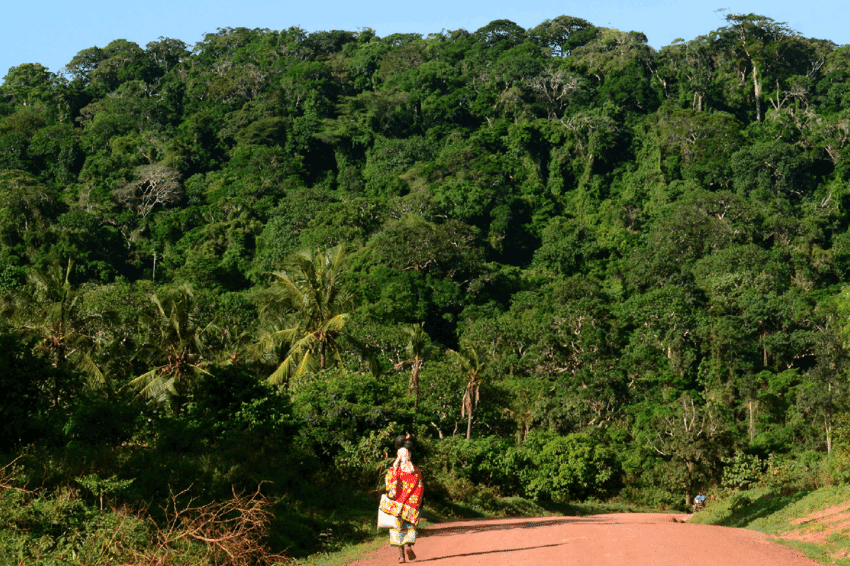
The Mijikenda Kaya Forests consist of 11 separate forest sites, spread over some 200 km along the coast. They contain the remains of numerous fortified villages, known as kayas, of the Mijikenda people.
The kayas, created in the 16th century but abandoned by the 1940s, are now regarded as the abodes of ancestors, revered as sacred sites and, as such, are maintained by councils of elders. These sites were inscribed to the list of UNESCO World Heritage Sites in 2008.
The Coastal Forest Conservation Unit (CFCu) was constituted by NMK to oversee the conservation efforts of these sacred forests.
Repositories of the Mijikenda people’s spiritual beliefs
Spread out along around 200km of the coastal region of Kenya are ten separate forested sites, mostly on low hills, ranging in size from 30 to around 300 hectares, which are the remains of fortified villages, Kayas, of the Mijikenda people. They represent more than thirty surviving Kayas.
The Kayas began to fall out of use in the early 20th century. They are now revered as the repositories of spiritual beliefs of the Mijikenda people, and seen as the sacred abode of their ancestors.
Shell spoons used by the Mijikenda community
The forest around the Kayas has been nurtured by the Mijikenda community to protect the sacred graves and groves and are now almost the only remains of the once extensive coastal lowland forest.
The Kenya Lake System in the Great Rift Valley: Natural Heritage Sites

The Kenya Lake System in the Great Rift Valley was added to the list of UNESCO World Heritage Sites in 2011. It is a natural property of outstanding beauty, comprising three interlinked, relatively shallow lakes (Lake Bogoria, Lake Nakuru and Lake Elementaita), and covers a total area of 32,034 hectares.
Some of the world’s greatest diversities and concentrations of bird species are recorded within these relatively small lake systems. They are jointly managed by Kenya Wildlife Services (KWS) and NMK.
Astonishing Landscapes
Major tectonic and volcanic events have shaped the distinctive landscape, which is a place for discovery.
Wildlife Wonders
The lakes have large mammal populations and are recognized as a valuable place for the study of ecological processes of major importance. It’s possible to spot black rhinos, Rothschild’s giraffes, greater kudus, lions, cheetahs and wild dogs.
For most of the year, up to 4 million lesser flamingos move between the three shallow lakes in an outstanding wildlife spectacle. Surrounded by hot springs, geysers, and the steep escarpment of the Rift Valley with its volcanic outcrops, the natural setting of the lakes provides an exceptional experience of nature.
The lakes are home to 13 globally threatened bird species and some of the highest bird diversities in the world. It is the single most important foraging site for the lesser flamingo anywhere, and a major nesting and breeding ground for great white pelicans.
Fort Jesus, Mombasa: An Architectural Heritage Sites
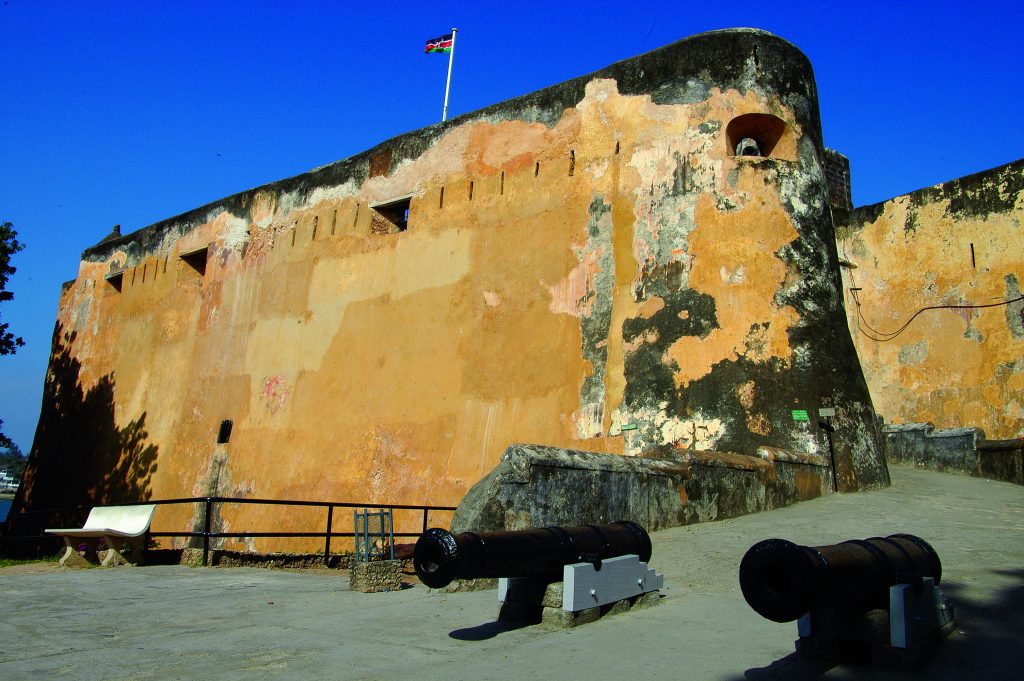
Built by the Portuguese at the end of the 16th century, Fort Jesus stands at the southern edge of Mombasa, over a spur of coral rock. It was kept under Portuguese control for one century and is testimony to the first successful attempt by Western civilization to rule the Indian Ocean trade routes – which, until then, had remained under Eastern influence.
This historical site was gazetted on 12/6/1970 and inscribed on the UNESCO World Heritage list in 2011.
Architecture built by the Portuguese
The Fort – built by the Portuguese in 1593-1596, to Giovanni Battista Cairati’s designs, to protect the port of Mombasa – is one of the most outstanding and well-preserved examples of 16th-century Portuguese military fortification, and a landmark in the history of this type of construction.
The Fort’s layout and form reflected the Renaissance ideal that perfect proportions and geometric harmony are to be found in the human body. The property covers an area of 2.36 hectares and includes the fort’s moat and immediate surroundings.
Fort Jesus, Mombasa, bears physical witness, in its structures and subsequent transformations, to the interchange of cultural values and influences between and among peoples of African, Arab, Turkish, Persian and European origin, who fought to gain and maintain their control over this strategic port.
Inside Fort Jesus Museum
The museum holds objects from archaeological excavations at Fort Jesus, Gede, Manda and Ungwana.
Thimlich Ohinga Archaeological Site
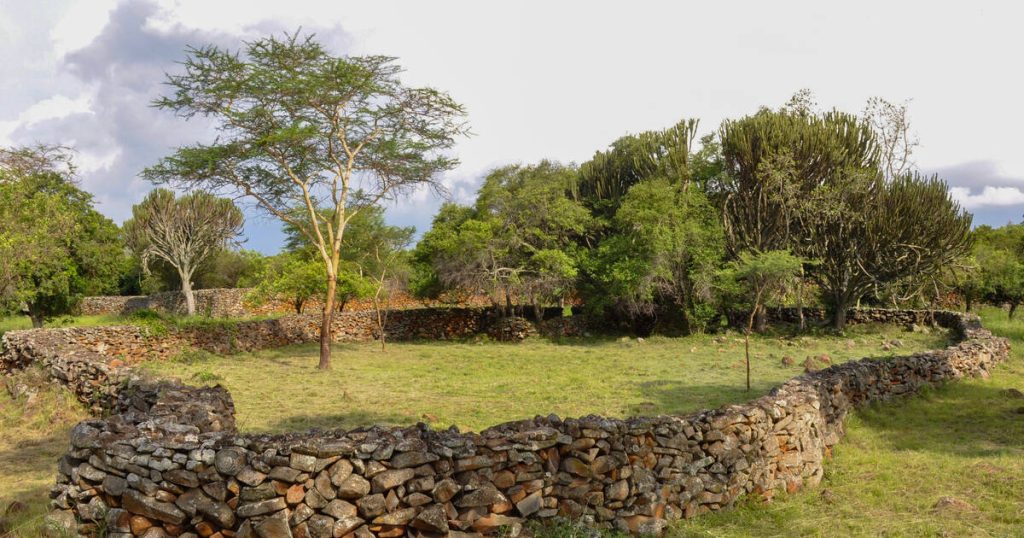
Thimlich Ohinga cultural site was gazetted as a national monument on 4/6/1982 and added to the UNESCO World Heritage Sites in 2018. Thimlich Ohinga refers to a “frightening dense forest” in the Dholuo language, a Nilotic group that occupies the region. The stone structure enclosure has walls ranging from 1.0 to 4.2 meters in height, which were built of loose stones and blocks without any dressing or mortar.
Built by the Communities
Archaeological records of materials found within the heritage sites go beyond 500 years ago. Since the present inhabitants of the area arrived probably some three centuries ago, it seems most likely that Bantus – who initially occupied this region before the arrival of Luos – first built the stone structures. Abundant rocks in the hilly areas provided them with building materials to meet their security requirements.
Subsequently, communities that moved into this region in the period between the 15th and 19th centuries carried out repair work and modification on the structures. However, all these episodes of occupation and repair did not interfere with the architecture and preservation of the structures.
During the first quarter of the twentieth century, the abandonment of Ohingni started en mass. No more stone structures were constructed, and consequently, some stone structures were reduced to mere traces of circumferences or disappeared altogether. Thimlich Ohinga is one of the few stone structures that survived.
Purposely selected elongated slabs were used at the gates as lintels to support the weight of the stones above the entrance.


